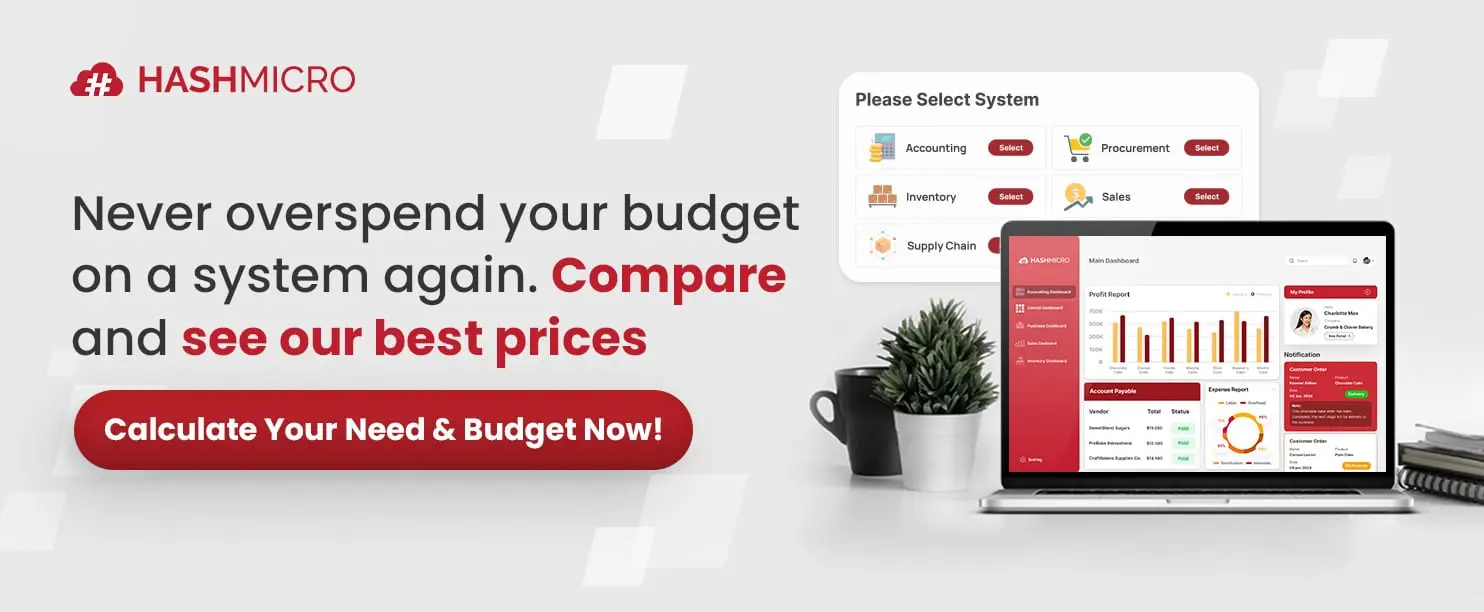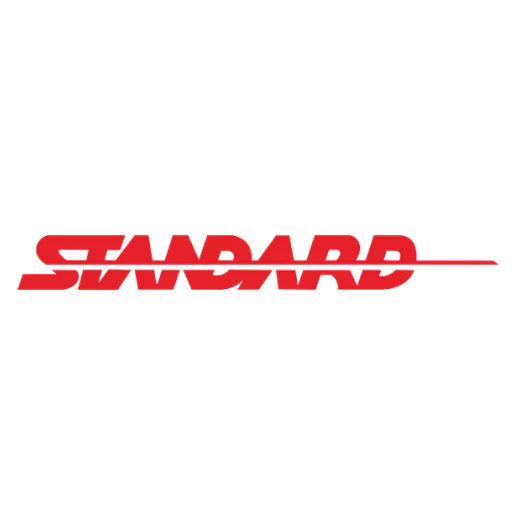Imagine running a business where a minor error in recording transactions could lead to inaccurate reports and impact crucial decisions. This is where a cut-off date becomes vital for maintaining the accuracy of financial data.
The challenges with cut-off dates often arise when transactions are recorded in the wrong period or when the deadline is missed. Such errors can distort financial reports, delay tax filings, and cause confusion in cash flow management.
According to a report from the Malaysian Accounting Standards Board (MASB), ensuring an accurate cut-off date is critical for maintaining transparency in financial reporting. Companies that consistently fail to manage this deadline effectively risk penalties and operational inefficiencies.
To avoid these pitfalls and optimise your financial management processes, read on to discover how implementing the proper cut-off date practices and utilising HashMicro Accounting Software can streamline your business operations.
Key Takeaways
|
What is a Cut-Off Date?
A cut-off date refers to the specific deadline for recording transactions within a defined accounting period. It ensures that all transactions before this date are included in financial statements.
For example, suppose a company operates on a monthly reporting cycle. In that case, the cut-off date is typically the last day of the month, marking the point at which transactions are finalised for the period.
This prevents overlap of transactions between accounting periods, providing clarity and accuracy in the company’s financial statements, which is crucial for both internal and external stakeholders.
Setting a precise cut-off date in Malaysia also supports smoother payroll processes, including the calculation of the cut-off date salary. This practice enhances financial management, ensuring your business remains compliant and facilitating better decision-making and strategic planning.
Cut Off Date vs. Deadline
The cut-off date marks the last day for recording transactions in a specific accounting period, ensuring accurate financial reporting. It separates one accounting period from the next by excluding transactions after the cut-off.
A deadline, on the other hand, is the final date by which a task or obligation must be completed, such as submitting financial reports or paying invoices. Missing a deadline can result in penalties or other consequences.
In short, a cut-off date ensures proper transaction recording for financial accuracy, while a deadline is the final point for completing required actions. Understanding both is key to effective financial management and compliance.
Why is the Cut-Off Date Important?
The cut-off date is crucial in maintaining accurate and compliant financial and business operations. By setting a precise cut-off date, companies can streamline accounting processes, ensuring accuracy and timeliness.
Here are several reasons why this date is important:
- Accuracy of financial statements: The cut-off date ensures transactions before it are recorded correctly in financial reports. This helps prevent errors and ensures that the company’s financial health is accurately represented.
- Compliance with tax and regulatory requirements: Setting a precise cut-off date ensures businesses meet their tax obligations by correctly reporting income, expenses, and deductions. This minimizes the risk of penalties and provides accurate financial reporting.
- Improved cash flow management: The cut-off date enables businesses to track which transactions belong to a specific period, facilitating more accurate cash flow forecasting. This ensures businesses have sufficient liquidity to meet financial obligations.
- Reliable business reputation: A well-defined cut-off date ensures payments, credit terms, and financial communication are timely. This builds trust and strengthens relationships with vendors, customers, and stakeholders.
- Better decision-making: The cut-off date provides the most current financial data, enabling businesses to make informed decisions about expansion, investments, and other strategic objectives. It ensures financial reports reflect the latest position.
- Fraud prevention: Setting clear cut-off dates reduces the risk of unauthorized transactions. This helps safeguard business finances and minimize fraudulent activities.
In summary, the cut-off date is essential for accurate financial records, regulatory compliance, and efficient decision-making. It serves as the backbone of organized financial management and operational efficiency.
What are the Benefits of Cut Off Date?
Setting a cut-off date for recording transactions is an essential practice for businesses to stay organized and maintain financial accuracy. By implementing a clear cut-off, companies can enjoy several operational and financial benefits. Here are the main advantages:
- Enhances financial reporting accuracy: A cut-off date ensures that all financial transactions are recorded within the correct accounting period. This eliminates the risk of mixing transactions from different periods, which could lead to inaccurate financial reports and decisions.
- Speeds up reconciliation processes: With a defined cut-off date, the reconciliation process becomes more straightforward and efficient. Accountants can quickly match data from different sources, such as bank statements and sales reports, reducing the time spent on manual checks.
- Facilitates tax compliance: A cut-off date helps businesses stay on top of their tax obligations by ensuring all transactions are correctly accounted for before the submission deadline. This prevents delays in reporting and minimizes the risk of penalties for incorrect or late filings.
- Improves cash flow management: The cut-off date helps businesses manage their cash flow by ensuring that all transactions are recorded promptly. This allows companies to track their finances accurately, avoid last-minute delays, and plan for timely payments and collections.
- Supports better budgeting and resource allocation: With a clear cut-off date, businesses can create realistic budgets and allocate resources more effectively. By knowing exactly where they stand financially at any given time, management can make informed decisions about where to invest and expand.
In conclusion, the cut-off date is a crucial practice for maintaining accuracy in financial reporting, ensuring timely compliance, and streamlining business operations. It aids in managing finances, preventing errors, and fostering better decision-making in the long run.
Tips for Avoiding Cut-Off Mistakes
Setting and managing cut-off dates accurately is critical to ensuring that financial data is precise and reliable. Mistakes in this process can result in incorrect financial statements, potentially impacting strategic decision-making.
Here are some key tips for avoiding cut-off errors:
- Establish clear cut-off policies: Ensure that your company has clear and well-documented cut-off date policies. These policies should be communicated effectively to all relevant departments, especially accounting and those involved in financial transactions, to avoid confusion.
- Use automated accounting systems: Automated accounting systems help minimize the risk of manual errors by ensuring that all transactions are recorded accurately and on time. These systems follow a set reporting schedule and streamline the recording process, reducing the likelihood of missing any critical transactions.
- Conduct regular monitoring and reconciliation: Perform regular monitoring and reconciliation of financial data before the cut-off date. Regular checks help identify and correct any recording mistakes well in advance, ensuring that the financial statements reflect the correct figures.
- Provide ongoing training for the accounting team: It’s essential to provide continuous training for your accounting team on the latest accounting standards and cut-off date practices. Well-trained staff ensure that they understand the importance of the cut-off date salary and can effectively adhere to the set guidelines.
- Train department heads and accounting staff: Train both department heads and accounting staff on the importance of the cut-off date and its implications. Ensure they understand how to enter invoices and expense claims in the correct period to prevent confusion and errors.
- Watch credit card statements: Credit card transactions may span beyond the fiscal year’s cut-off date, so it’s crucial to review credit card statements for transaction dates. Whenever possible, use online statements to ensure that all relevant expenses are entered into the correct accounting period promptly.
- Avoid ordering services or products too close to the end of the year. Ordering services or products near the cut-off date can cause delivery delays, which may result in them being recorded in the next fiscal period. Avoid placing orders too close to the closing date to prevent misalignment with the intended period.
By following these tips, businesses can effectively avoid cut-off errors and ensure their financial records are accurate, timely, and compliant with standards. Proper management of cut-off date procedures helps maintain organizational efficiency and strengthens overall financial integrity.
Unlock Seamless Cut-Off Date Management with HashMicro Accounting Software
HashMicro is a leading provider of cloud-based accounting software in Southeast Asia, helping businesses across Malaysia streamline and automate their financial management processes.
Managing cut-off dates can be challenging, especially for companies with a high volume of transactions. However, HashMicro’s best accounting software makes this process easier and more efficient, ensuring that all transactions are recorded accurately within the correct periods.
HashMicro’s Accounting System stands out for its precision, flexibility, and seamless integration with various business functions. It automates cut-off date management, minimises errors and speeds up the recording process, leading to more accurate financial statements and compliance with deadlines.
Some of the key features that make HashMicro’s Accounting System the best choice for managing cut-off dates include:
- Bank Integration & Auto Reconciliation: This feature automatically integrates with banks to synchronize and reconcile transactions. By doing so, it ensures that all financial data is accurate and up-to-date, which helps maintain the integrity of financial records and reduces errors during reconciliation.
- Multilevel Analytical Reports: It categorizes financial data by divisions, projects, or other criteria, providing detailed business insights. This allows businesses to understand performance across various sectors, leading to better decision-making and targeted strategies for growth.
- Profit & Loss vs Budget & Forecast: This feature compares actual financial statements with budgets and forecasts. By tracking variances, businesses can quickly identify discrepancies, enabling them to adjust strategies and stay on track with their financial goals.
- Cash Flow Reports: It offers clear insights into cash inflows and outflows, simplifying liquidity management. This helps businesses ensure they have enough cash flow to meet obligations and maintain financial stability.
- Financial Ratio Analysis: This tool calculates key financial ratios to assess the company’s financial health. It enables businesses to evaluate their profitability, liquidity, and efficiency, leading to more informed financial decisions.
- HR Integration: This feature automates the management of payroll cut-off dates and employee expense data. It improves operational efficiency by ensuring that payroll and expenses are accurately recorded and processed on time, reducing manual work and minimizing errors.
With these features, HashMicro’s Accounting System enables companies to manage their finances more effectively and accurately. Its automation and real-time data-driven insights allow accounting teams to make better decisions and ensure that cut-off dates are handled smoothly and on time.
Conclusion
A cut-off date is a key point that marks the end of recording transactions for a specific period. Managing it correctly ensures accurate financial statements and avoids errors.
HashMicro Accounting Software offers an integrated, automated solution that streamlines cut-off date management. With its customizable features, HashMicro ensures that all transactions are recorded accurately, making financial reporting more efficient and reliable for your business.
Optimize your financial management today by trying HashMicro’s free demo. Click the banner below to see how our advanced features can help you manage your cut-off dates effortlessly.






























